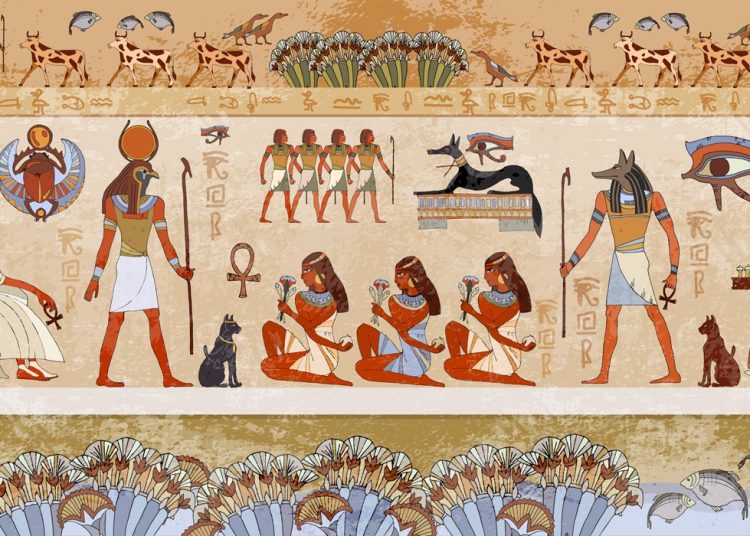The ancient Egyptians were amazing at keeping track of time. They used both the moon and the sun to create a calendar that had 365 days in a year, just like we do today. That’s very impressive, because the solar year is not easy to measure accurately. Their calendar was one of the first ones to be so precise and sophisticated.
The calendar had three main components: the lunar calendar, the civil calendar, and the Sothic cycle. The lunar calendar was based on the phases of the moon and consisted of twelve months of 29 or 30 days each, plus an extra month every few years to keep it aligned with the seasons.
The civil calendar was a fixed system of twelve months of 30 days each, followed by five extra days at the end of the year. The civil calendar did not account for the leap year, so it gradually shifted out of sync with the solar year.
The Sothic cycle was a method of tracking the heliacal rising of Sirius, the brightest star in the sky, which marked the beginning of the Egyptian New Year and the flooding of the Nile. The Sothic cycle lasted for about 1460 years, after which the civil and solar calendars would coincide again.
The ancient Egyptians had a unique way of celebrating the New Year, which was closely related to the Nile River and its annual flood. They observed the phenomenon of the solar rise, which was the first appearance of the Sirius star in the night sky after a period of 70 days. This usually happened in mid-July, before the Nile began to overflow and fertilise the land.
The ancient Egyptian celebration of the New Year was called Wepet Renpet, which means ‘the opening of the year’.
This event was vital for the fertility and prosperity of the land, and was seen as a time of renewal and rebirth.
Chief Curator of the Egyptian Museum in Cairo Sabah Shabeeb told The Egyptian Gazette that ancient Egyptians celebrated various occasions with great enthusiasm, and they immortalised their festivities on the walls of their temples and tombs.
She said that the New Year was one of the most significant events for them, and they celebrated it with large crowds in the holy places.
“They also paid visits to their friends and relatives at their homes, which were embellished with festive ornaments. They enjoyed happiness and food together. They greeted each other with a ‘Green Year’, hoping for a bountiful and fruitful year, as green was the symbol of their crops,” Shabeeb added.
They celebrated this occasion by wearing new clothes and jewellery that they had bought or made for the occasion, Shabeeb said.
They also gave new dolls to their children as gifts, which were made of clay, wood or cloth and decorated with beads, feathers or paint. The dolls represented the goddess Hathor, who was associated with joy and fertility.
“They sacrificed oxen, sheep or goats in front of the temples and shared the meat with the poor, who otherwise could not afford such food.
“The meat was inspected by a veterinarian before being offered, to ensure that it was healthy and clean,” she added.
They also visited the temples and performed religious rituals with music and incense, to honour the gods and ask for their blessings. The music was played by harps, flutes, drums and cymbals, and the incense was made of frankincense, myrrh and other aromatic substances.
They enjoyed some delicacies such as cakes, pies, ducks, geese, some types of fish, vegetables and fruits, which were prepared with honey, spices and herbs. The cakes and pies were shaped like animals or plants, and the fish were cooked in salt or vinegar.
The vegetables and fruits included onions, garlic, leeks, lettuce, dates, figs, grapes and pomegranates.
This way, they welcomed the New Year with joy and gratitude, hoping for a prosperous and peaceful future.
Some examples of other ancient Egyptian feasts are: The Opet Festival which honoured the god Amun, the king of the gods and the patron of Thebes. It was celebrated in the second month of the season of Akhet, which lasted from 11 to 27 days. The festival involved a grand procession of the sacred barque of Amun from his temple at Karnak to his consort Mut’s temple at Luxor. The king and his family, along with priests and officials, accompanied the barque and received blessings from Amun.
There was also the Feast of the Valley, which was dedicated to the deceased ancestors and relatives of the living. It was celebrated in the third month of the season of Shemu, which lasted for three days. The festival involved visiting the tombs and offering food, drink, flowers, and incense to the spirits of the dead.
In addition to the Sed Festival which was a royal jubilee that celebrated the king’s reign and rejuvenation. It was first celebrated after 30 years of rule and then every three years thereafter. The festival involved a series of rituals that demonstrated the king’s physical and spiritual fitness, such as running around a marked course, wearing different crowns, offering sacrifices, and receiving homage from foreign dignitaries.






Discussion about this post